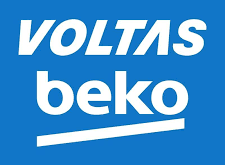National, July 16, 2025: In a rapidly industrializing world, where factories form the backbone of economic growth, a silent but powerful influence is shaping the fate of manufacturing enterprises across India — Vastu Shastra. This ancient Indian architectural science is not just relevant for homes or temples, but also serves as a transformative force for industrial success when applied to manufacturing units.
“Vastu is not superstition—it is a science rooted in natural laws,” says Dr. Raviraj Ahirrao, Co-founder and Chairman at VastuRaviraj. “When correctly applied in factories, it channels energies that enhance productivity, stabilize operations, and ensure long-term growth. A well-aligned industrial unit is more likely to succeed, even in volatile markets.”
Vastu Shastra is a holistic system that harmonizes built spaces with the elemental and directional energies of nature. For factories, its correct implementation helps identify operational risks and offers practical remedies to overcome them. One of the most important considerations is the alignment with cardinal directions. For instance, entrances in the East are known to attract growth-oriented energies. However, it is not just the direction but the precise positioning of the entrance that influences outcomes.
Many industrial units have faced significant setbacks due to neglecting Vastu principles—be it from faulty layouts, misaligned machinery, or incorrect zoning. When applied properly, Vastu ensures that every section—from raw material storage to dispatch—is in sync with natural energy flow, enhancing operational harmony and financial gain.
Achieving this alignment is complex. A Vastu consultant must understand the entire manufacturing process and how each element—machinery, materials, utilities—interacts with directional forces. Hence, only a highly experienced and qualified consultant can create an optimized plan that integrates industrial needs with Vastu guidelines.
Key Vastu Insights for Manufacturing Units Include:
- Plot Positioning: Place the factory in the southwest zone with maximum open space in the northeast to encourage positive flow.
- Entrance Strategy: Use one of the 8 auspicious entrances from North, East, or Northeast zones to attract continuous wealth and opportunity.
- Office & Machinery Layout: Administrative blocks and heavy machinery should be in the southwest; lighter machines in the north and east.
- Sacred Spaces: A temple in the northeast should be clean and clutter-free, energized with daily rituals.
- Storage: Raw materials are best stored in the south or southwest; finished goods and dispatch areas should be in the northwest.
- Utilities: Boilers and maintenance rooms should stay in the southeast or southwest—not the center or northeast.
Vastu Don’ts for Industry:Avoid septic tanks in the northeast and never leave the southwest zone empty. Don’t store raw and finished goods together, park heavy vehicles in the northeast, or construct maintenance rooms in the centre or northeast, as these disrupt energy equilibrium.
By integrating Vastu into industrial planning, businesses can unlock a powerful blueprint for sustainable prosperity, operational balance, and long-term success.
 Newspatrolling.com News cum Content Syndication Portal Online
Newspatrolling.com News cum Content Syndication Portal Online







